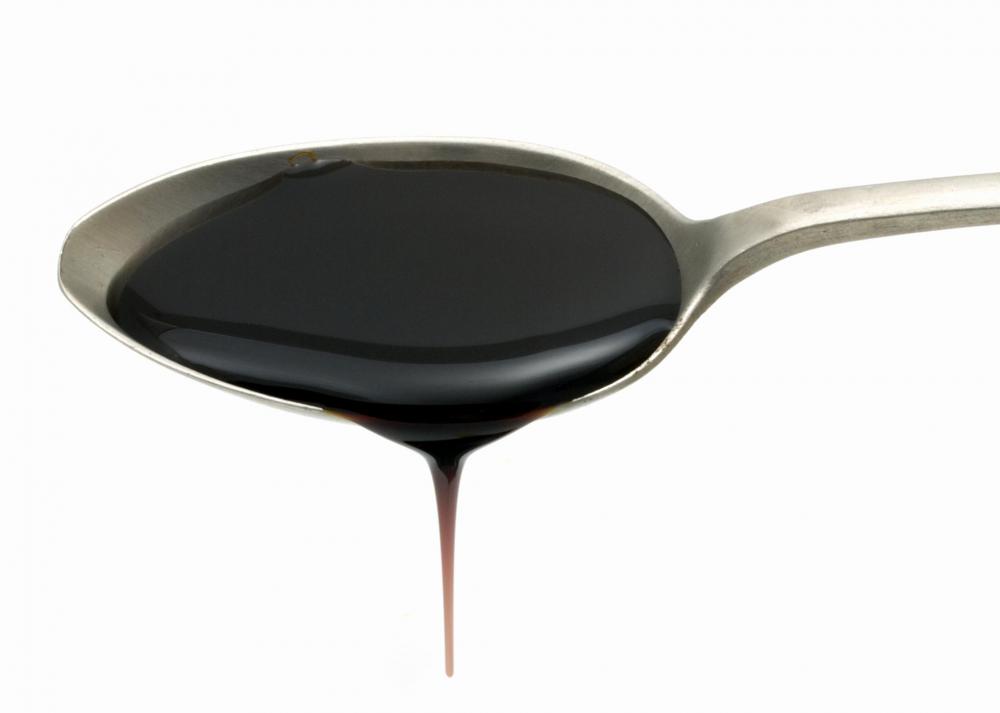At WiseGEEK, we're committed to delivering accurate, trustworthy information. Our expert-authored content is rigorously fact-checked and sourced from credible authorities. Discover how we uphold the highest standards in providing you with reliable knowledge.
How Is the Viscosity of Liquids Found?
In many scientific and industrial situations it is necessary to known the viscosity of liquids. Viscosity is the measure of the liquid’s resistance to flow. Liquids with high viscosity have greater resistance to flow and are not readily deformed by physical stress, while liquids with low viscosity are “thin” and flow easily. The viscosity of liquids can be found by using an instrument known as a viscometer, of which there are many different types. In cases where less precise measurements are acceptable, viscosity can also be measured using simple gravity-based devices.
One of the most common types of viscometers is the falling sphere viscometer. This setup measures the viscosity of liquids by timing how long it takes a small sphere of known density and size to fall a certain distance through a liquid. The sphere is placed into a vertical tube filled with the liquid, and allowed to reach its terminal velocity as it falls. At terminal velocity, the force of drag pulling the sphere upwards is equal to the force of gravity pulling it downwards, and the sphere ceases to accelerate, maintaining a constant speed as it drops. Once the terminal velocity, density of the liquid and sphere, and size of the sphere are known, a formula, Stokes’ law, can be used to calculate the viscosity of the liquid.

Another fairly simple viscometer that is used in laboratory settings is the Ostwald viscometer, also known as the glass capillary viscometer or U-tube viscometer. This U-shaped glass tube device consists of two bulbs, one on the lower part of the left arm of the U, and the other on the high part of the right. It is held vertically as the liquid is drawn up into the upper bulb and then allowed to flow back down to the lower bulb, past two marks on the tube. The viscosity of liquids can be deduced by factoring in the diameter of the glass tube, the amount of time it takes for a liquid to flow past the two marks, and the density of that liquid.

Laboratories that require precision measurements may use more elaborate viscometers that incorporate electronics and measure viscosity using an oscillating piston or vibrating resonator submerged in the liquid. In other settings, such as the paint industry, simpler physical principles can be used to deduce approximate viscosity of liquids. These measurements often rely on a measure known as kinematic viscosity — the resistance of a liquid to flow in the presence of gravity.
The Zahn cup and the Ford viscosity cup are examples of gravity-based devices used to measure kinematic viscosity. In these devices, the liquid — paint, in the case of the Zahn cup, or motor oil for the Ford cup — drains through a small hole in the bottom of a cup as it is held aloft. The liquid flows out in a smooth stream until a certain point where it breaks up into drops. Depending on the viscosity of the liquid, breakage will occur at different times. A measure of kinematic viscosity can be found by multiplying this time in seconds by the cup’s specification number, which is calibrated for the appropriate liquid.
AS FEATURED ON:
AS FEATURED ON:












Discuss this Article
Post your comments